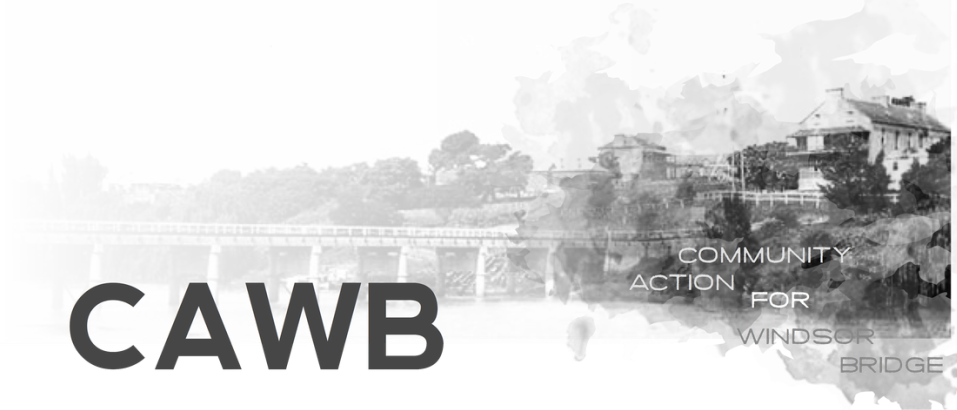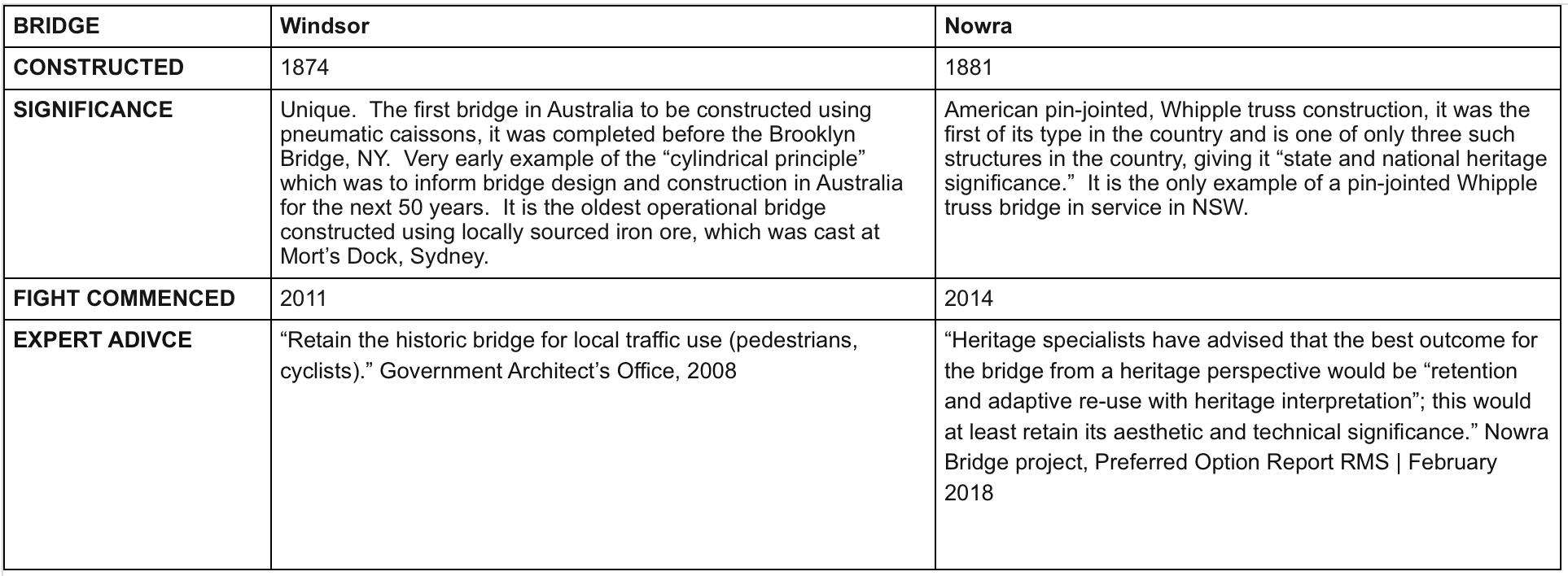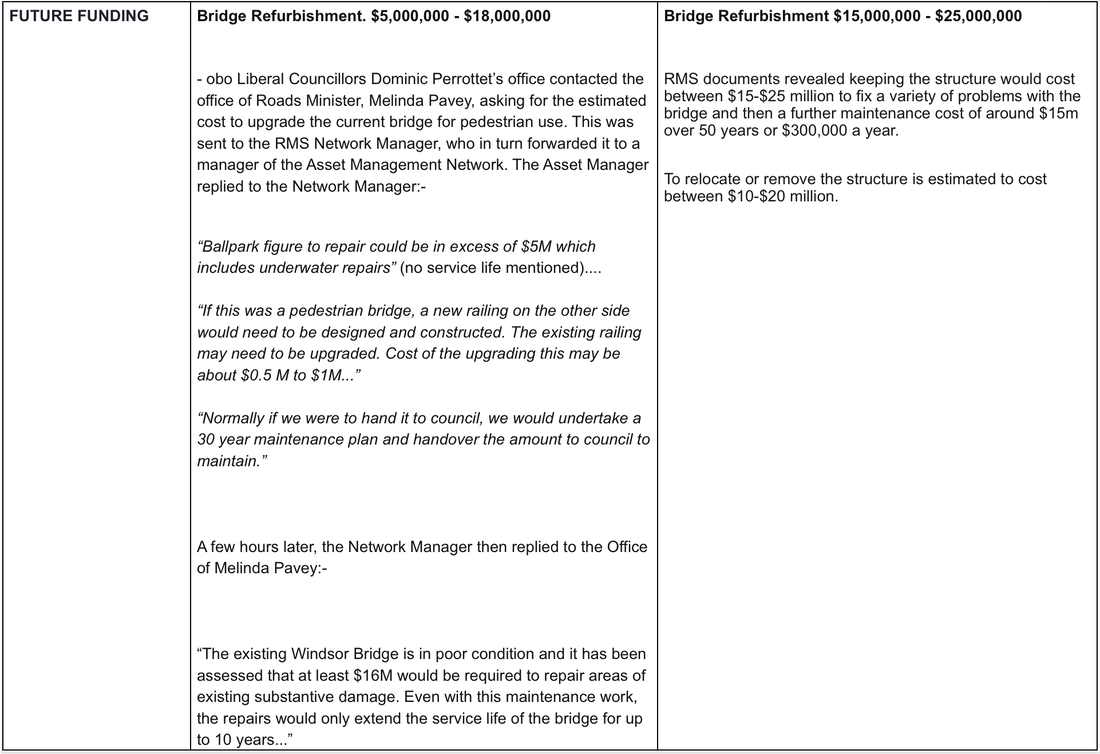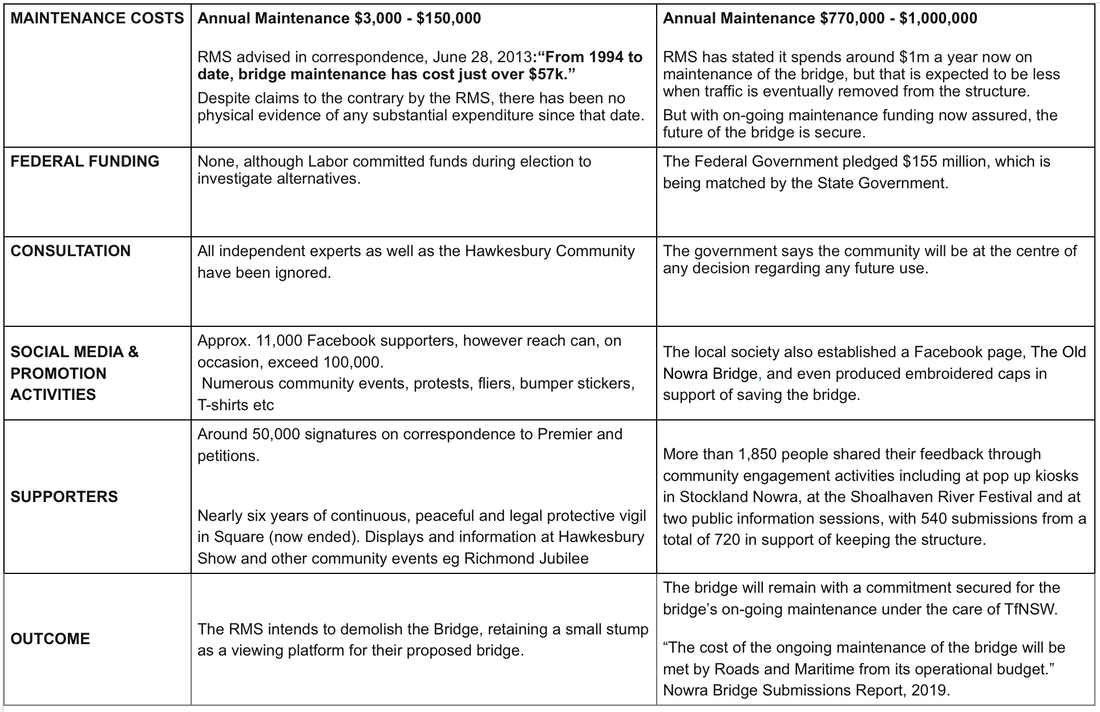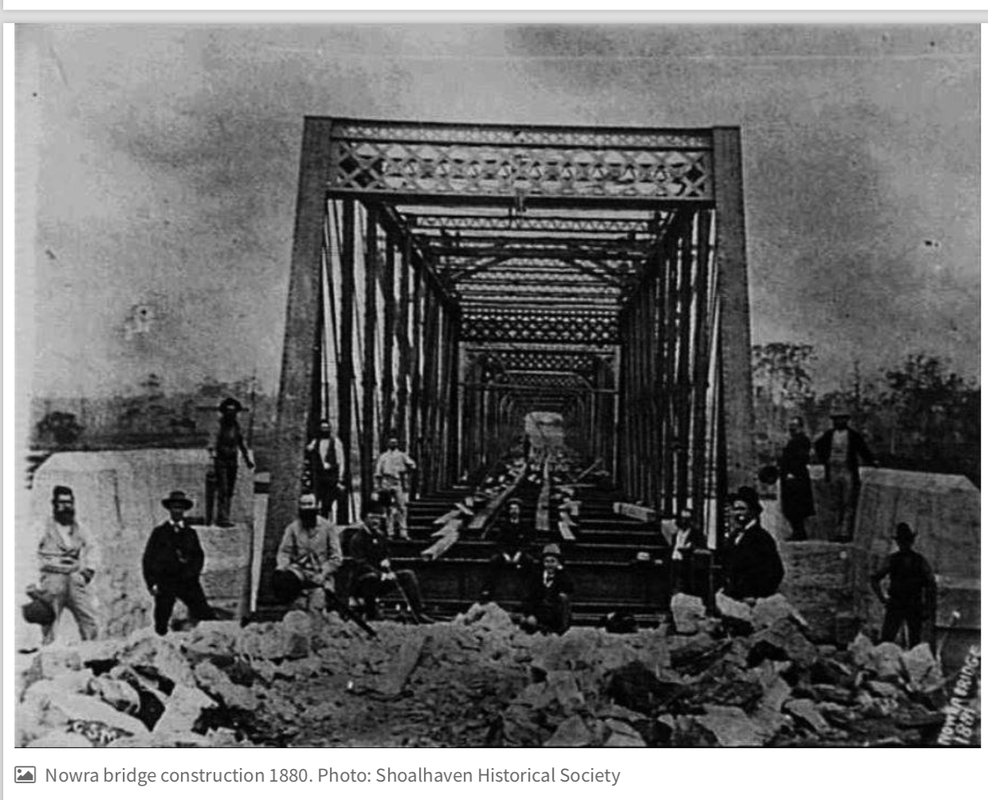A Tale of Two Bridges.
In Windsor our remarkable, historic Bridge could easily be economically refurbished and returned to the community for pedestrian and cyclist use. But don't take our word on this. There has been overwhelming expert advice, including sworn testimony from bridge engineers at the Parliamentary Inquiry into the WBRP which confirms this. Yet NEVER was any real consideration given by the NSW Government to retaining the existing bridge.
However, in Nowra, it is a different story altogether. When Nowra's historic bridge was to be replaced, the RMS said they needed to “look at the heritage value of the bridge and (their) RESPONSIBILITIES to conserve it.”
And so, after community consultations, the RMS retained Nowra's historic Bridge.
So, why does Nowra get their 1881 bridge saved while Windsor's historically significant 1874 bridge is about to be demolished...?
Well, after trying on the "working on it is too difficult" argument (summarily dealt with by senior bridge engineers), the RMS then told us maintenance costs for Windsor Bridge were too high... when, in fact ... they are just a fraction of the costs for Nowra Bridge.
Next the RMS tried "refurbishment costs are too expensive" ...but yet again ... the costs for Windsor Bridge are significantly LESS than those for Nowra... and so it went on.
The decision to retain the bridge at Nowra, but destroy the historic and significant bridge at Windsor shows the Windsor decision was never decided on merit. Like other recent issues, it shows the willingness of LNP Governments to pick and choose, based on their own agenda.
There is no reason for our bridge to be demolished. It just needs a Government that makes decisions on merit, not political motives.
Historic snippets
THE ILLAWARRA MERCURY Trove newspaper article 3.2.1881
18th January 1881 it was acknowledged in Parliament the cylinders of the Nowra Bridge
had sunk:
'The Nowra bridge appears to afford scope for a little wholesome inquiry. According to the Minister for Works it is evidently going down, and will, for all anybody can say to the contrary, collapse altogether. In November one corner had sunk 14 inches, and since then it has gone down two feet six, making a total drop of three feet eight inches. ...’ ”
https://trove.nla.gov.au/newspaper/article/132979400
WINDSOR: Town and Country Journal 22 August 1874
“Many freshes and several heavy floods retarded operations; and the sinking of all the piers could not be completed until December, 1873. Although a few feet only of the iron columns appear above water, the cylinders reach an average depth of 40 feet below summer level. By the use of the sand- pump and air- lochs, boulders, drift-wood, and logs, several feet in thickness, were removed at considerable depths, and each pillar firmly bedded and lewised four feet into the solid rock. The bracing beams were also fixed below water by divers, before the erection of the superstructure.”
THE ILLAWARRA MERCURY Trove newspaper article 3.2.1881
18th January 1881 it was acknowledged in Parliament the cylinders of the Nowra Bridge
had sunk:
- Pier of large span No. 7 - 1 foot 2 inches on November 7th; had since sunk and been forced down 2 feet 6 inches.
- Pier 5 had sunk 10 inches on November 7th; none since.
- Pier 4 had sunk 3 inches;
- Pier 3 had sunk 7 inches; piers 6, 2, and 1 have not moved.
'The Nowra bridge appears to afford scope for a little wholesome inquiry. According to the Minister for Works it is evidently going down, and will, for all anybody can say to the contrary, collapse altogether. In November one corner had sunk 14 inches, and since then it has gone down two feet six, making a total drop of three feet eight inches. ...’ ”
https://trove.nla.gov.au/newspaper/article/132979400
WINDSOR: Town and Country Journal 22 August 1874
“Many freshes and several heavy floods retarded operations; and the sinking of all the piers could not be completed until December, 1873. Although a few feet only of the iron columns appear above water, the cylinders reach an average depth of 40 feet below summer level. By the use of the sand- pump and air- lochs, boulders, drift-wood, and logs, several feet in thickness, were removed at considerable depths, and each pillar firmly bedded and lewised four feet into the solid rock. The bracing beams were also fixed below water by divers, before the erection of the superstructure.”
